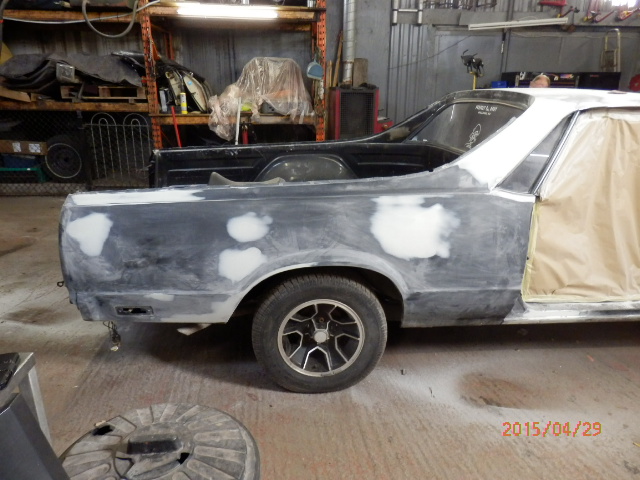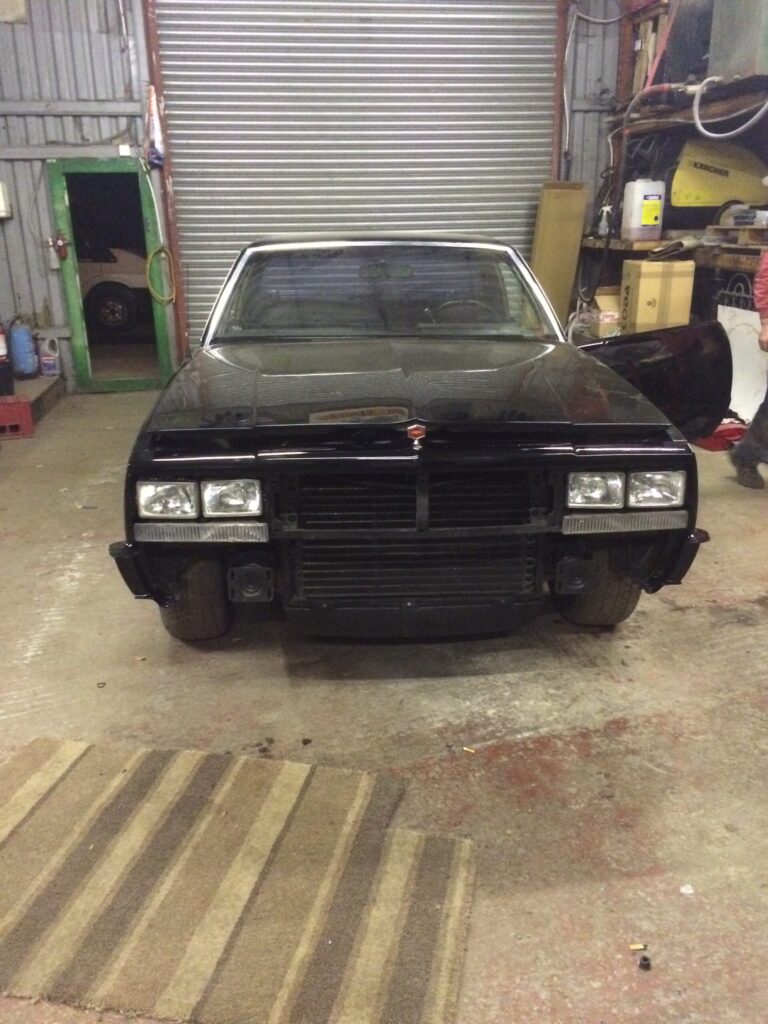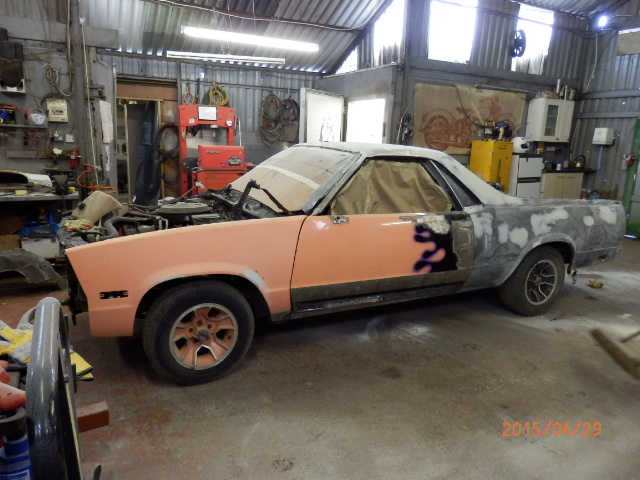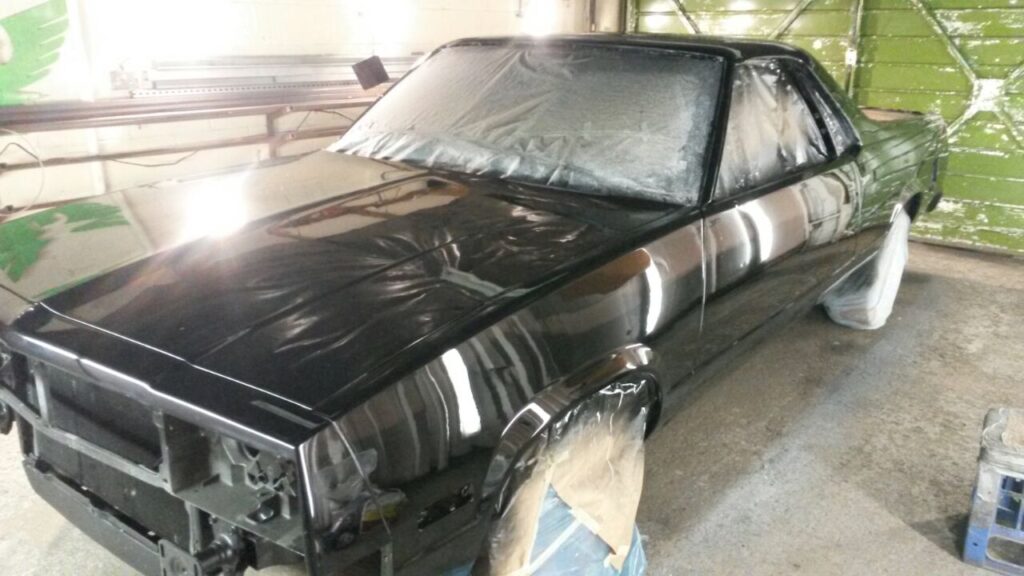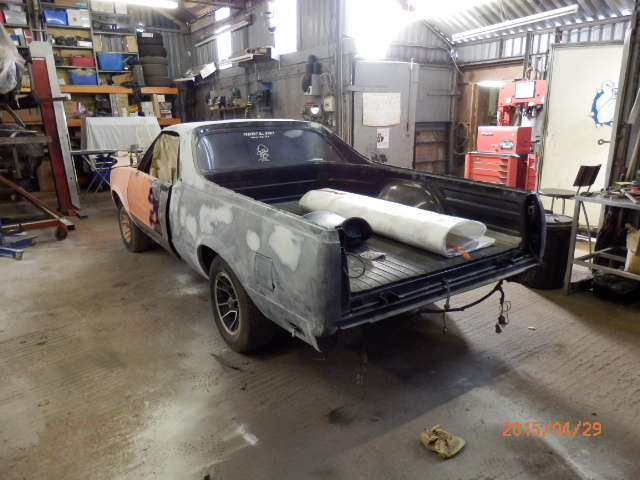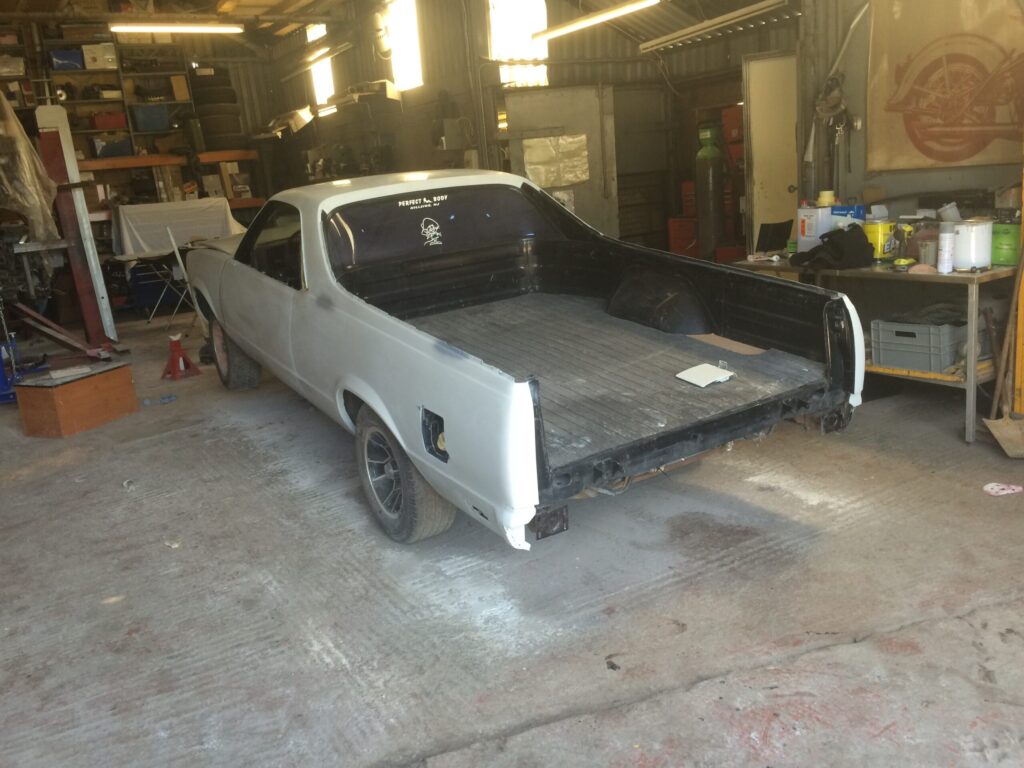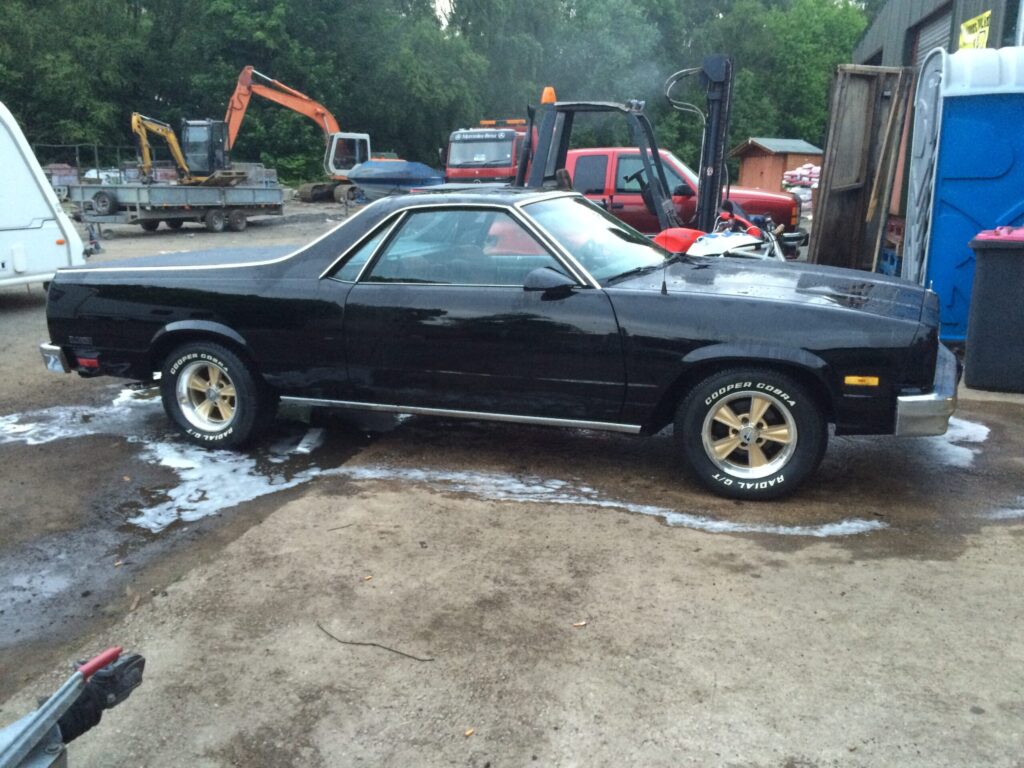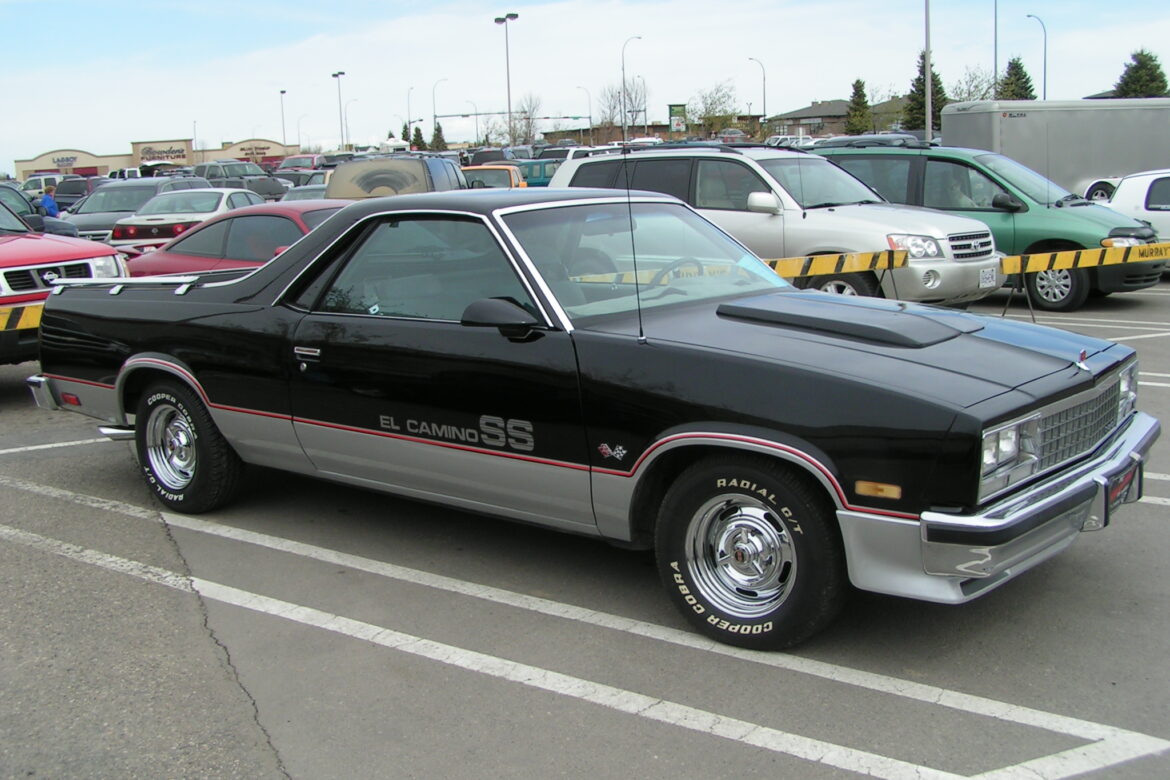Our El Camino story
Restoring a 1984 Chevrolet El Camino: From Rusty Relic to Manchester Muscle Car
When this 1984 Chevrolet El Camino arrived in Manchester from New York, it embodied the challenges and potential of classic car restoration. What began as a rust-compromised shell with a tired 305 V8 evolved into a revitalized American icon through a focused six-week transformation. The project blended period-correct aesthetics with modern performance upgrades, including a 350 small-block V8, 700R4 four-speed automatic transmission, and comprehensive bodywork—a testament to the enduring appeal of GM’s car-truck hybrid.
Powerplant Revival: The 350 Small-Block Resurrection
At the heart of this restoration lies Chevrolet’s legendary 350 cubic inch (5.7L) small-block V81417. Originally introduced in 1967, this engine became a staple of GM’s performance lineup due to its compact design and adaptability. For this El Camino, the 350 was rebuilt to factory specifications with a nod to modern reliability. The refurbishment included:
- Cylinder Heads: Vortec iron heads with 1.94″ intake valves and 1.50″ exhaust valves7, improving airflow over the original 305’s components.
- Camshaft: Hydraulic flat-tappet camshaft with 0.435″/0.460″ lift7, balancing street manners and torque production.
- Rotating Assembly: Nodular iron crankshaft and powdered-metal steel connecting rods7, ensuring durability under stress.
With a compression ratio of 9.1:1 and compatibility with 92-octane fuel7, the rebuilt 350 delivers approximately 330 horsepower and 381 lb-ft of torque7—a significant upgrade from the original 150 hp 3051319. This powerplant now provides the El Camino with the muscular character it lacked in its anemic 1980s configuration.
Drivetrain Modernization: The 700R4 Transmission
To harness the 350’s output, the factory three-speed automatic was replaced with a 700R4 four-speed automatic9. Introduced in 1982, this transmission became renowned for its overdrive fourth gear (0.70:1 ratio)9, reducing highway RPM by 30% and improving fuel efficiency. Critical upgrades included:
- Input Shaft: 30-spline configuration post-1984 revision9, enhancing torque capacity.
- Corvette Servo: Aftermarket upgrade to strengthen 3-4 shift firmness3.
- Lockup Torque Converter: Retained factory wiring compatibility3, ensuring seamless integration with the El Camino’s existing electronics.
The 700R4’s 3.06:1 first gear ratio9 pairs perfectly with the 350’s low-end torque, enabling brisk acceleration while maintaining highway cruising comfort—a marked improvement over the original TH250C’s limited gear spread3.
Structural Rehabilitation: Combating Rust and Restoring Integrity
Floor Pan Replacement
New York’s harsh winters had ravaged the El Camino’s floor pans. The restoration process followed professional protocols1112:
- Metal Preparation: Rusted sections were cut out using plasma cutters, preserving intact factory seams.
- Panel Fabrication: Custom floor pans were shaped using hand tools and welded into place with MIG welders12, avoiding heat distortion.
- Corrosion Protection: Cavity wax12 and phosphate etching primer11 were applied to inhibit future rust.
Door Bottom Reconstruction
Lower door skins exhibited advanced corrosion—a common issue in G-body vehicles. Repair involved:
- Sectional Replacement: Cutting out compromised metal and welding in hand-formed patches12.
- Seam Sealing: Polyurethane sealant along inner/outer panel joints to prevent moisture ingress12.
Full Respray Process
The body underwent a show-quality respray adhering to OEM standards11:
- Stripping: Chemical paint removal followed by 220-grit sanding.
- Bodywork: Polyester filler applied to minor dents, block-sanded to 400-grit.
- Priming: Two coats of epoxy primer with guide coating for leveling.
- Base/Clear: Three-stage metallic paint (factory-matched hue) with infrared curing.
Modern Conveniences: Electronics and Aesthetics
Power Door Locks
The manual door locks were replaced with an aftermarket keyless entry system. Actuators were mounted inside the door shells using bracketry that avoided interference with window regulators. Wiring was routed through factory grommets to maintain a stock appearance.
Wheel Upgrade
Period-correct 15″ Racing Wheels (Cragar SS-style)16 were installed, wrapped in 235/60R15 radial tires. The alloy construction reduces unsprung weight versus steel wheels, improving steering response.
Braking System Overhaul
The original front disc/rear drum setup was retained but received comprehensive refurbishment:
- Calipers: Rebuilt with stainless steel pistons and high-temperature seals.
- Rotors: Turned to eliminate warping.
- Pads/Shoes: Semi-metallic compounds for improved bite.
- Hydraulics: New master cylinder and braided stainless lines.
Conclusion: A Six-Week Transformation
This Manchester-based restoration demonstrates how focused effort and technical expertise can resurrect a neglected El Camino. The 350/700R4 drivetrain pairing honors GM’s performance heritage while delivering modern driveability. Structural repairs ensure decades of continued service, and subtle upgrades like electronic locks blend convenience with classic styling. For enthusiasts, this project underscores the 1984 El Camino’s potential as a blank canvas for creative mechanical expression—a true mullet machine that’s all business up front and party in the back.s here
